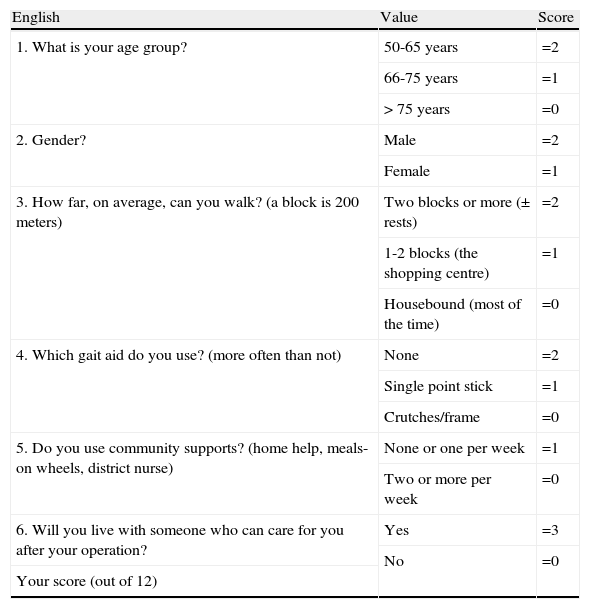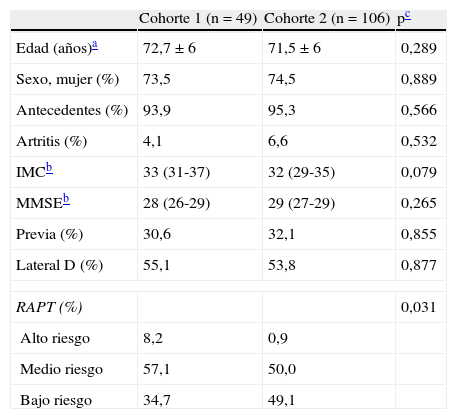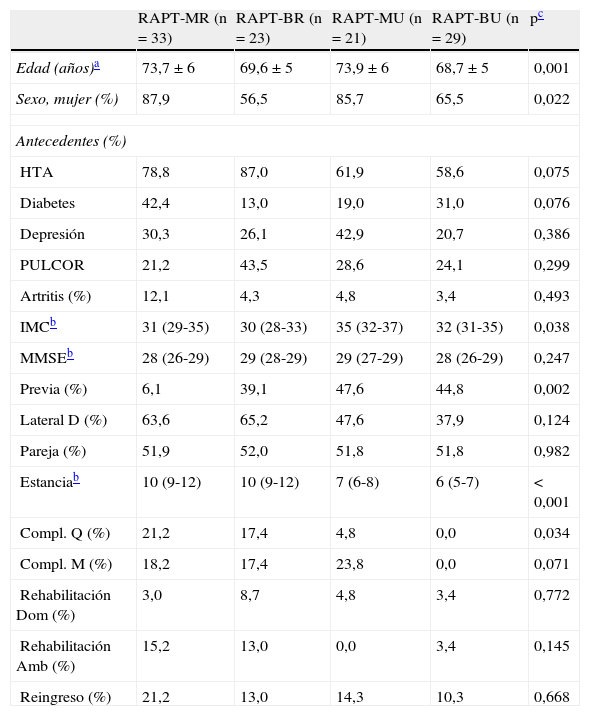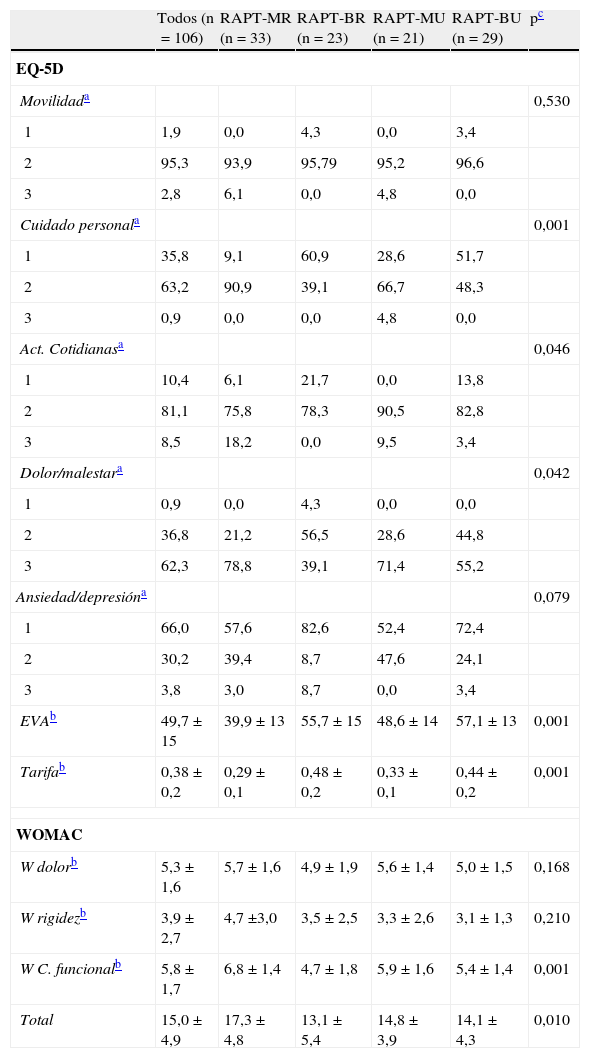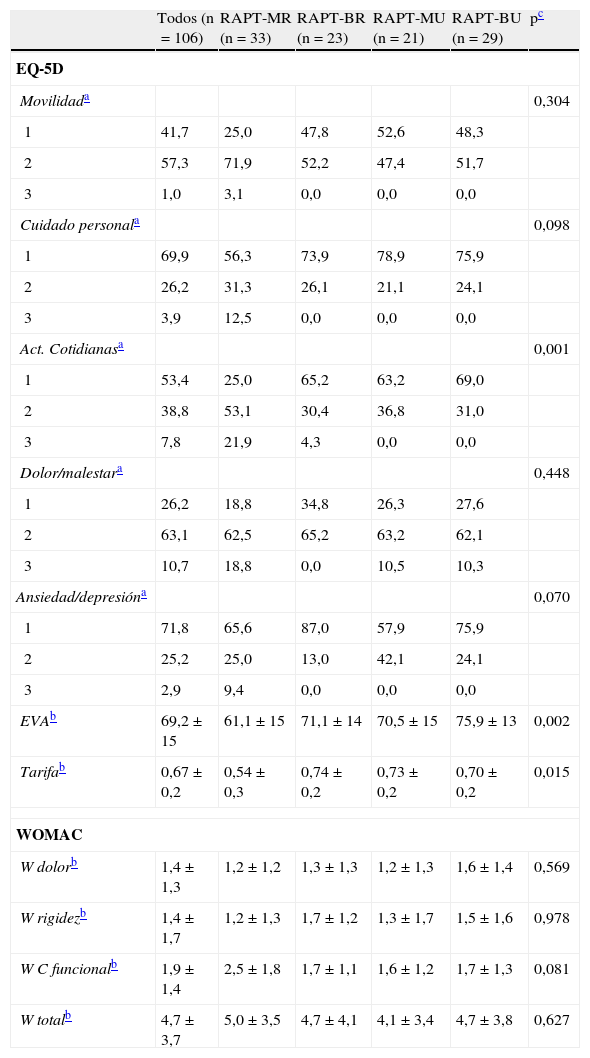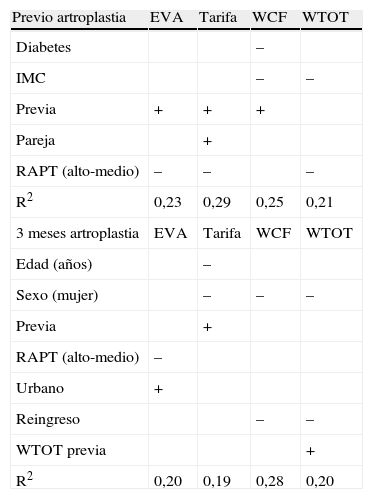Primero, validar la escala Risk Assessment and Prediction Tool (RAPT) para valorar el tratamiento rehabilitador tras prótesis total de rodilla (PTR) en nuestra población. Y, segundo, utilizando la escala validada, identificar los factores que influyen en la calidad de vida previa y a los 3 meses de la PTR.
MétodoEstudio prospectivo de todos los pacientes con indicación de PTR ingresados desde enero a julio de 2005 (cohorte 1) y desde enero a julio de 2006 (cohorte 2). Procedimiento de traducción-retrotraducción y validación de la escala RAPT en cohorte 1 (49 pacientes). Se evaluó la calidad de vida mediante EQ-5D y WOMAC. Se realizó un análisis de regresión lineal y logística múltiple en cohorte 2 (106 pacientes) de los factores relacionados con peor calidad de vida.
ResultadosLa validación de la escala RAPT obtuvo una buena correlación con EQ-5D y WOMAC. En la cohorte 2, los pacientes se clasificaron en 4 grupos según RAPT (medio-alto y bajo) y lugar de residencia (rural y urbano). Un nivel de RAPT medio-alto y vivir en zona rural se relacionó con peor calidad de vida previa y a los 3 meses. En cambio, tener una PTR previa y pareja fueron factores relacionados con mejor calidad de vida previa. Los factores relacionados con peor calidad de vida a los 3 meses fueron ser mujer y la edad avanzada.
ConclusionesLa escala RAPT es un instrumento válido, fiable y de fácil aplicación. La escala RAPT y zona de residencia permiten estratificar los pacientes según la calidad de vida y la necesidad de rehabilitación.
The first objective is to validate the Risk Assessment and Prediction Tool (RAPT) scale to assess rehabilitation therapy after total knee arthroplasty (TKA) in our population. The second objective is to identify the factors that affect quality of life before and at 3 months post-TKA using the validated scale.
MethodA prospective study of all patients with TKA admitted to hospital from January to July 2005 (cohort 1) and from January to July 2006 (cohort 2) was performed. The «translation-back-translation» procedure and validation of the RAPT scale in cohort 1 (49 patients) were carried out. Quality of life was assessed with the WOMAC and EQ-5D scales. A lineal regression and multiple logistic analysis was carried out in cohort 2 (106 patients) regarding the factors related to worse quality of life.
ResultsValidation of the RAPT scale obtained good correlation with the EQ-5D and WOMAC. The cohort 2 patients were classified into 4 groups according RAPT (medium-high and low) and place of residence (rural and urban). Medium-high RAPT level together with rural residence was associated with worse quality of life before and at 3 months post-TKA. Having a previous TKA and living with a partner were factors associated with a better previous quality of life. Older age and female gender were factors associated with worse quality of life at 3 months.
ConclusionsThe RAPT scale is a valid, reliable, and easy-to-use application. The RAPT scale and area of residence makes it possible to stratify patients according to quality of life and need for rehabilitation.
Artículo
Comprando el artículo el PDF del mismo podrá ser descargado
Precio 19,34 €
Comprar ahora









